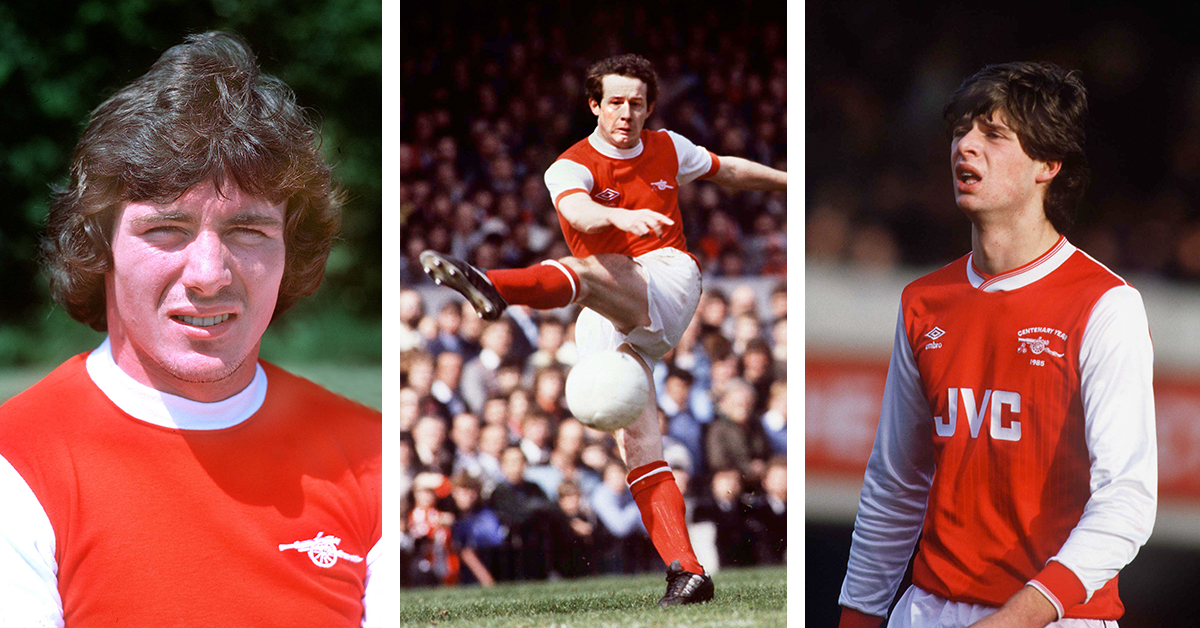


Last week saw a Community Day at The Arsenal Hub with 120 children from the local area attending for a taste of Irish culture and to learn about Arsenal’s Irish heritage. The children delved into the shared history of Ireland and Arsenal learning about how Islington became a home to Irish immigrants and their descendants, the rich history of Irish players and staff at the club…..and even found time to learn the bodhrán and try their hand at some hurling and Gaelic football courtesy of the Holloway Gaels!
And this Saturday March 23rd we are back at the Emirates Stadium to host a very special lunch event to raise important funds for the London Irish Centre and the Arsenal Foundation. LIC patron Dermot O’Leary will play host to Liam Brady, David O’Leary, Frank Stapleton, Sammy Nelson, and Niall Quinn as the Arsenal Irish community comes together for an afternoon of food, music, and talk.
The last few tickets can be purchased here: https://londonirishcentre.ticketsolve.com/ticketbooth/shows/1173653669
Ultimately this is for all those who have an Irish connection but also those who don’t. It is for lovers of The Arsenal. It is for the residents of Islington, Camden, and London. For the Irish Arsenal diaspora – to learn about, enjoy, and celebrate in the diversity and richness of Arsenal’s Irish culture and heritage.
Below we share perspectives from two key voices from the Arsenal family: London-Irish writer Martin Keady alongside Arsenal In The Community’s Samir Singh.
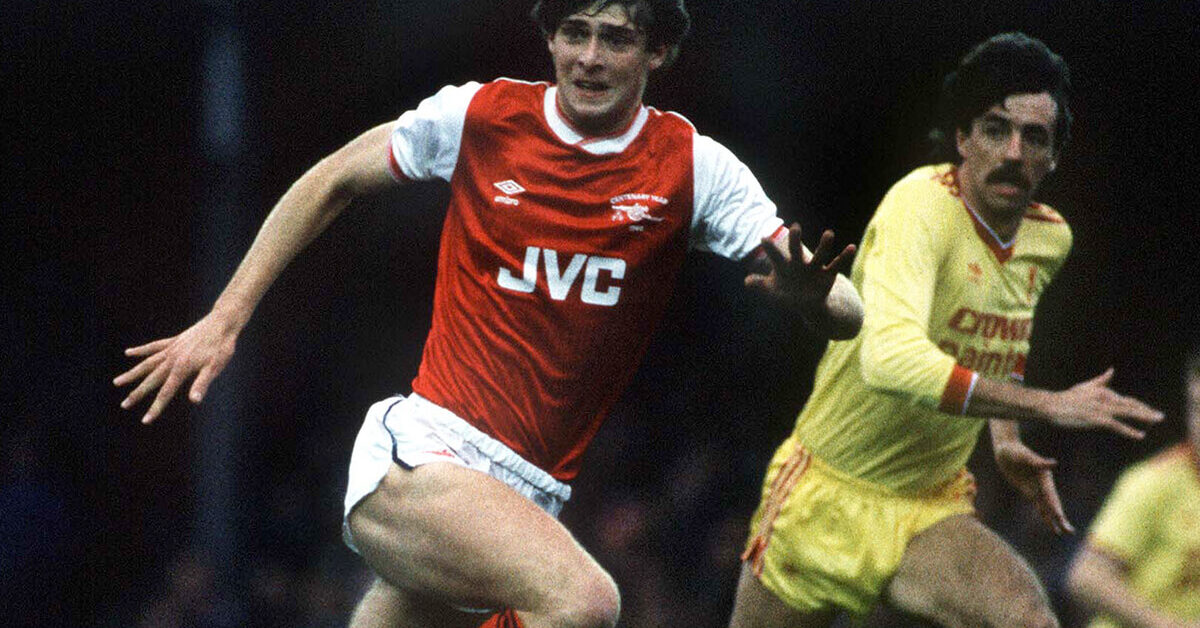
When the London Irish Centre asked me to write a piece for their celebration of Arsenal’s Irish connection, it was literally a dream come true. Like almost all Arsenal fans, I have always dreamt of playing for the club, and in the absence of playing for the club, writing for Arsenal and especially writing about what it means to be a London-Irish fan of Arsenal is the next best thing. I can now stop dreaming of winning an Oscar for screenwriting, because this is truly infinitely better.
That’s because being a London-Irish fan of Arsenal constitutes an enormous part of my identity (with what little is left being consumed by the roles of husband, father and writer), as I know it does for so many Arsenal fans of Irish descent in London. That is especially true in the traditional “London Irish Counties” of Camden, Islington and Greenwich (my birthplace), where so many of the post-war Irish immigrants to England settled.
Growing up as London-Irish or “EOIO” (English of Irish origin, as I prefer to call it, because of its humorous, sing-along quality) in the 1970s was not always easy. It was the time of “The Troubles” (the ultimate euphemism, surely) in Northern Ireland, which in turn led to a sustained IRA bombing campaign in mainland Britain and widespread vilification of the Irish immigrant community in England by parts of the mainstream media and even some politicians.
It was into this incredibly charged atmosphere that Arsenal entered my life, because from the mid-1970s onwards, there were suddenly so many Irish players in the Arsenal first team, especially “The Holy Trinity” of Liam Brady, Frank Stapleton and David O’Leary, that some of the older members of my extended family started referring to them as “Éiresenal”. This, of course, was a pun on the Irish word for Ireland (Éire), and the pronunciation of “Éiresenal “ compelled you to speak in an Irish accent, or at least a cod-Irish accent.

Having said that, it must be emphasised that in the 1970s there were not only Arsenal players from the Republic of Ireland but from Northern Ireland, too. Indeed, there was virtually an Ulster “Holy Trinity” of Pat Rice, Sammy Nelson, and Pat Jennings. The manager at the time was Terry Neill (pictured above), another Northern Irishman, who, like Jennings, was so good, especially in the FA Cup, that we forgave him for having previously played for Spurs.
I started supporting Arsenal largely because my Dad did and he started supporting them largely because they had so many Irish players. He always joked that whenever he went to Highbury, “It felt like being home”, precisely because there were so many Irish players in the team and Irish fans in the stands. And much later, my father and some of the other construction workers involved in the redevelopment of Highbury in the early 1990s, most of whom were Irish or of Irish origin, enjoyed a kickabout on the pitch, with my father pretending to be Frank Stapleton as he scored the winning goal.
In supporting Arsenal, my father and his colleagues in the construction industry were following in the footsteps of other, earlier Irish workers in London, especially north London, who also adopted Arsenal as their club. Navigator Square in Archway is a tribute to the Irish “Navvies” (or navigators/engineers) of the 19th century who did so much to build Britain. However, their 20th-century counterparts were equally important in helping to rebuild Britain, especially London, after the devastation of World War Two. And like my father, many of them supported Arsenal.
The Arsenal side of the late 1970s was not as successful as it should have been. In fact, despite appearances in several finals, both domestic and European, they only ever managed to win just one trophy together, the 1979 FA Cup. That came after they reached the second of the three FA Cup Finals in succession that they reached between 1978 and 1980, which made them the first team in the 20th century to reach three FA Cup Finals in a row.
Nevertheless, if you’re only ever going to win one final together, then it might as well be one of the greatest cup finals ever and certainly the FA Cup Final with the greatest ending ever. In fact, the famous “Five-Minute Final” of 1979, when Manchester United fought back from two goals down to draw 2-2 before conceding a late winner, is for me and for many Arsenal fans of my vintage the cup equivalent of Anfield 89. It was so unforgettable that I later wrote and produced an award-winning short film about it, simply called The Final.
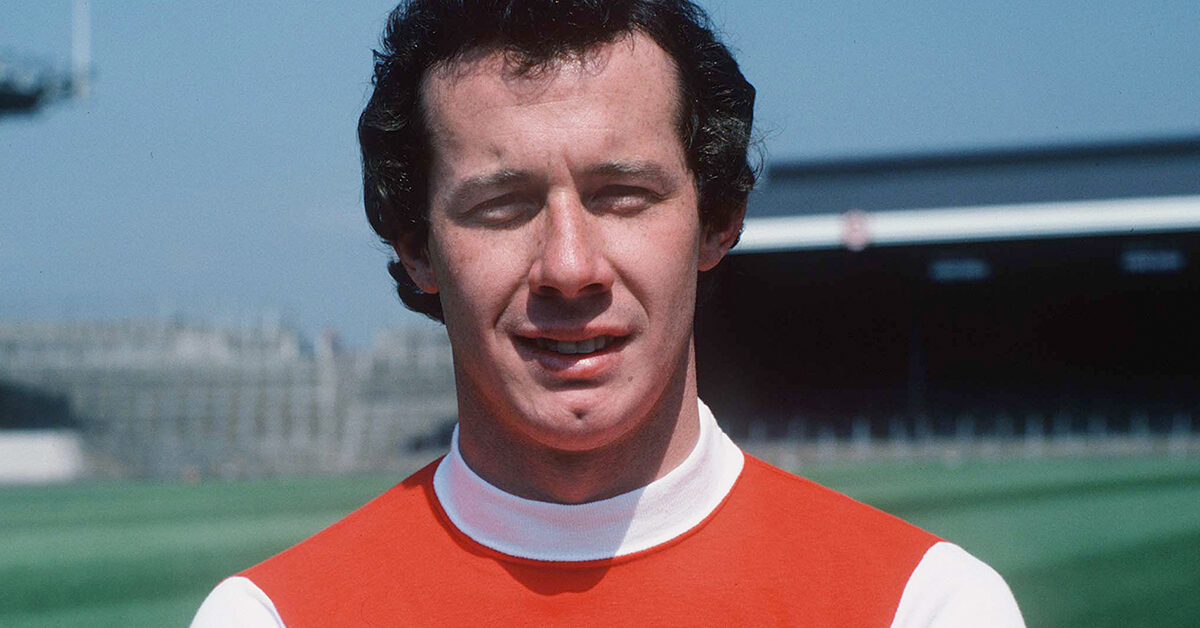
Far more importantly, however, what that Arsenal/Éiresenal team of the late 1970s did was to make it acceptable, indeed even cool, to be Irish or London-Irish at a time, before Terry Wogan’s near-monopolisation of British television and the rise of The Pogues (The London-Irish Beatles) in the 1980s, when there was very little to make being Irish or London-Irish cool, or even acceptable. And I know from talking to other London-Irish or Irish Gooners that I was not alone in feeling that way.
The great green flood of the 1970s eventually slowed to a trickle, with Liam Brady leaving for Juventus in 1980 (I cried) and Frank Stapleton leaving for Manchester United in 1981 (I booed). But David O’Leary remained and was eventually rewarded, as were all we long-suffering Arsenal fans of the 1980s, with Anfield 89, the greatest ending of any football match ever, and the other triumphs that followed under George Graham. In addition, Pat Rice graduated from playing to coaching and was literally the right-hand man to Arsène Wenger throughout his glory years, which were the greatest in Arsenal’s history since our Golden Age of the 1930s. And even today the great Katie McCabe is a one-woman flank player à la Philipp Lahm, seemingly playing as a left-back and a left-winger simultaneously.
So, the Arsenal team today, particularly the men’s team, is not quite as Irish as they were in the 1970s; of course, that would be almost impossible now, given the complete globalisation of football, especially since the creation of the Premier League. However, Arsenal as a club still retains a streak of green running through it and always will, at least for me and for many other London-Irish Gooners.
That is why it has genuinely been a pleasure, thrill and honour to write this piece for the London Irish Centre and Arsenal in the club’s first ever celebration of Irish History Month. It has reminded me (even if I was unlikely ever to forget) what a truly transformative role Arsenal Football Club has played in my life and the lives of so many London-Irish Gooners.
Martin Keady is a writer whose work includes The Shakespeare Plays (a biopic of The Bard) and Withnail & I: From Cult To Classic, a new book about the most quotable film ever made that he has co-written with Toby Benjamin (a Spurs fan and author, but a truly lovely one). He is currently co-writing with Guy Harvey a children’s book about Herbert Chapman, Arsenal’s first and greatest manager, which is due to be published in 2025, the 100th anniversary of Chapman becoming manager of Arsenal.
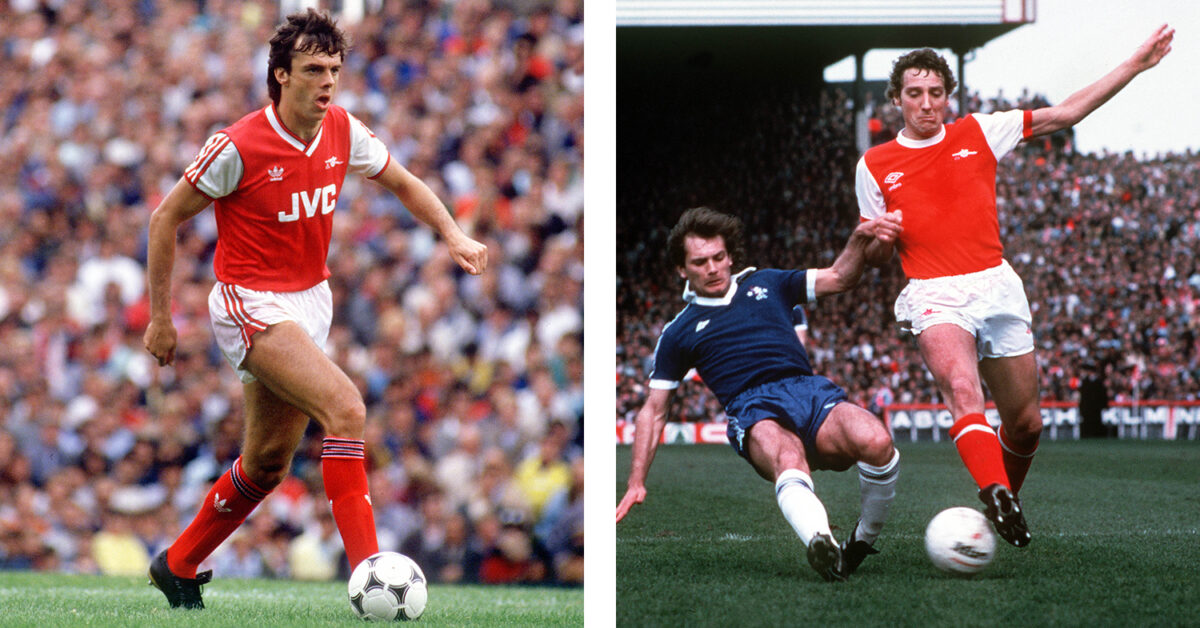
Being the child of immigrants, I have always felt the Irish story is one of success both in terms of contribution and integration to local communities, especially here in North London.
I’m of Punjabi descent. My parents moved to London from East Africa in the 1970s. But I grew up in Newington Green, so I’m a native north Londoner.
Throughout my lifetime here, I’ve always felt that special Irish connection. To our local area, and to our football club.
I’ve been an Arsenal season ticket holder for almost 30 years now and have always been enamoured by our Irish heroes.
The likes of David O’Leary and Niall Quinn both played for the Arsenal sides I became obsessed with as a youngster. Today, we’ve got Katie McCabe in our women’s team.
It runs deeper than just players though. North London’s Irish community has always been drawn towards their local Islington club.
They’ve become a permanent part of our terraces, as well as our matchday chants and songs too.
Our Irish community even worked on the development of our beloved Highbury Stadium, helping to erect the East and West Stands in the 1930s.
Irish roots run deep in Islington and Arsenal, and ahead of St Patrick’s Day this year, we took great pride in celebrating this connection.
They’ve become a permanent part of our terraces, as well as our matchday chants and songs too.
Our Irish community even worked on the development of our beloved Highbury Stadium, helping to erect the East and West Stands in the 1930s.
Irish roots run deep in Islington and Arsenal, and ahead of St Patrick’s Day this year, we took great pride in celebrating this connection.
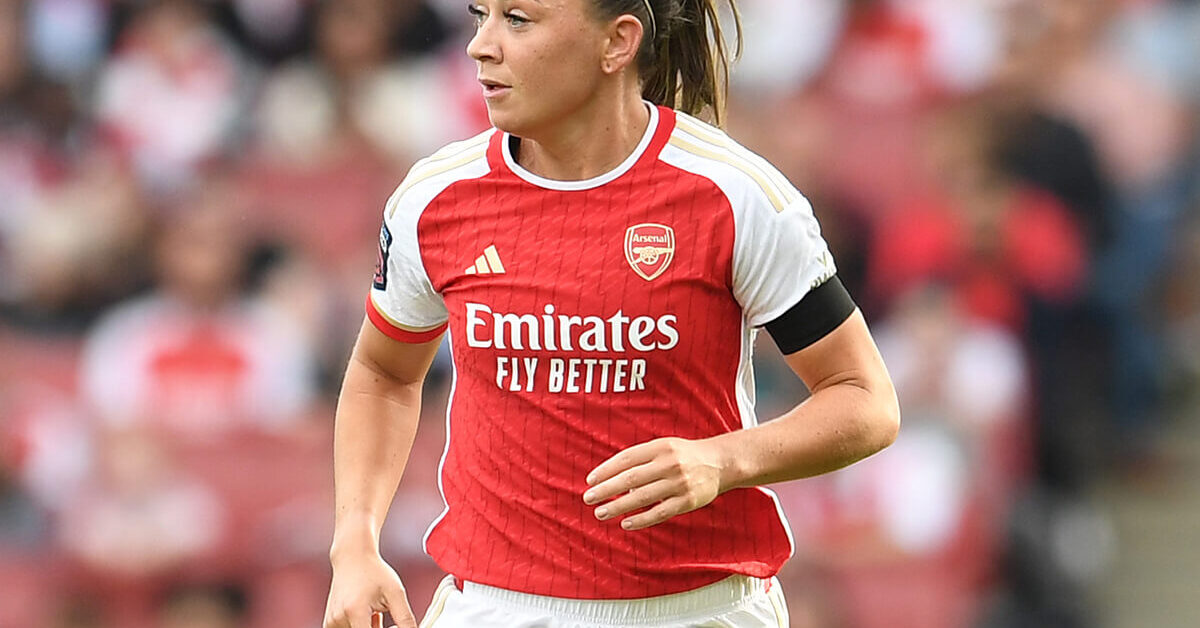
On Friday 15th March, Arsenal in the Community hosted our first Irish Cultural Day.
We brought together local Catholic schools across Islington for various workshops including Irish drumming, a lesson on the history of the Irish community in Islington, Irish storytelling, and even Gaelic Football and Hurling taking place at the Arsenal Community Hub.
We came together to recognise the contribution of the Irish community, to share experiences, and to learn more about the history of our local area. Personally, I felt proud to be able to host this event at our club for the first time.
And, whilst St Patrick’s Day has been and gone, we will continue to celebrate our special connection.
This weekend, we will come together as one in a special fundraising event at Emirates Stadium, hosted jointly between the London Irish Centre and the Arsenal Foundation.
It is open to all those in the local community who wish to get involved and mark that bond between our club and the Irish community.
More information and tickets are available here: https://londonirishcentre.ticketsolve.com/ticketbooth/shows/1173653669
With thanks to Stuart MacFarlane for the photography
Be the first to hear about events, rafflles, competitions, fundraisers, impact stories & more.
"(Required)" indicates required fields